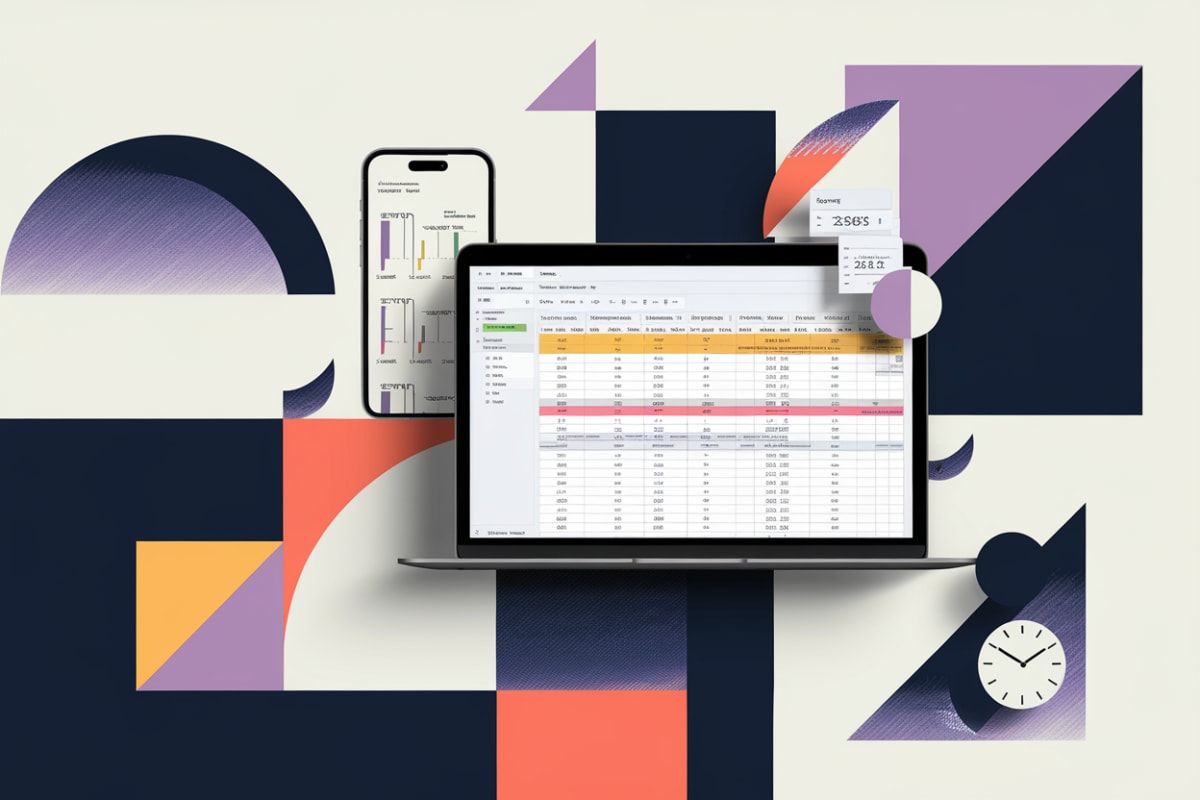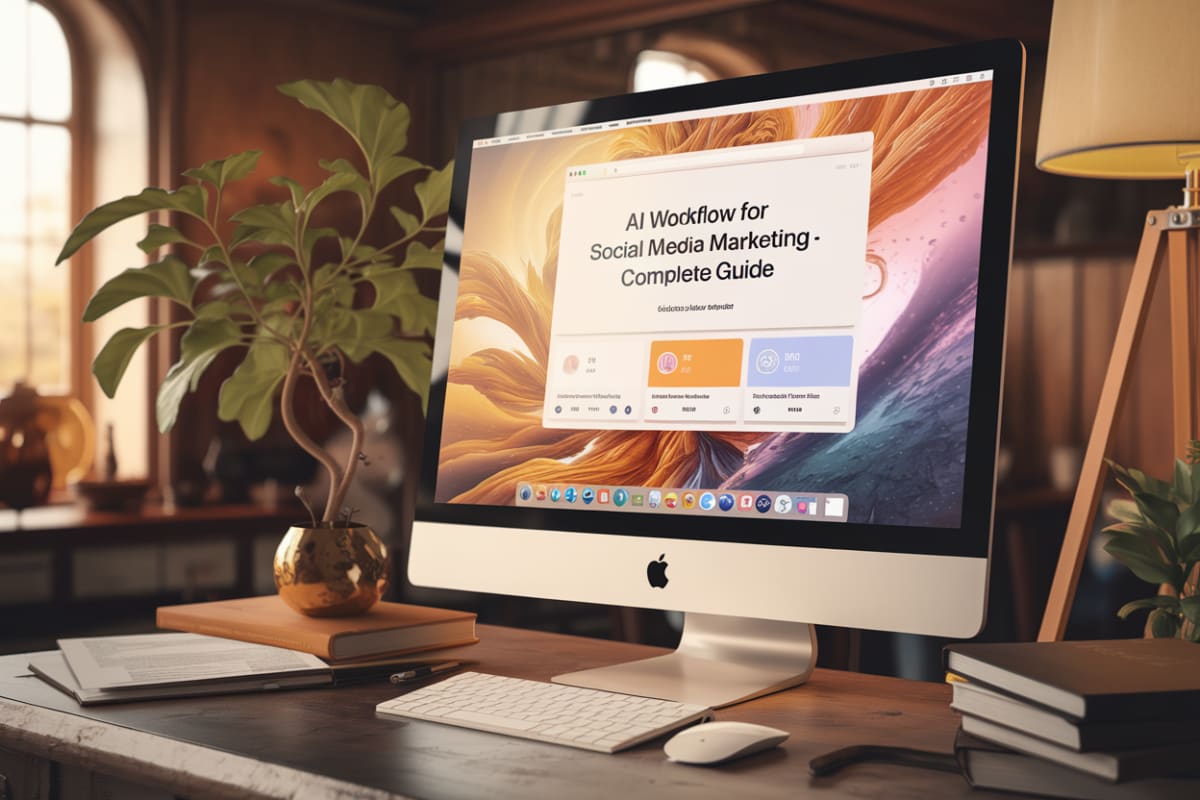Social Media KPIs: Complete Guide
What are social media KPIs?
Definition of Social Media KPIs
Social Media Key Performance Indicators (KPIs) measure values that help organizations assess the effectiveness of their social media strategies. They provide insights into how well social media efforts align with business objectives. Common KPIs include:
- Engagement Rate: Measures interaction (likes, shares, comments) relative to total followers or reach. For instance, a Facebook post with 100 likes and 10,000 impressions has an engagement rate of 1%.
- Follower Growth Rate: Tracks how quickly a brand's audience grows. If a brand increases its followers from 1,000 to 1,200 in a month, the growth rate is 20%.
- Reach: The total number of unique users who see a post. For example, if a post reaches 5,000 people, it indicates potential exposure.
- Website Traffic from Social Media: Measures how many visitors come to a website through social media channels. This can be tracked using UTM parameters.
Examples and Case Studies
- MLB's World Series Engagement: In 2024, MLB reported 37.1 million engagements (up 195% from 2023) during the World Series. Their Instagram platform alone saw 22.7 million engagements, indicating effective content strategies that resonate with fans Sports Business Journal.
- Financial Services Benchmarks: A study on social media benchmarks for financial institutions revealed an average engagement rate of 3.6% on Facebook and 5% on Instagram as of September 2024. These metrics help institutions gauge their performance against industry standards Hootsuite.
Conclusion
Overall, social media KPIs evaluate the success of social media campaigns and refine marketing strategies. They provide quantifiable metrics that allow brands to make data-driven decisions.
Why are social media KPIs important?
Importance of Social Media KPIs
Social media KPIs measure the effectiveness of your social media strategy and ensure your efforts align with business goals. Here are several key reasons why they are indispensable:
Data-Driven Decision Making
Tracking KPIs allows businesses to make informed decisions based on quantitative data. Hootsuite emphasizes that social media measurement assesses the success of your strategy through analytics tools, enabling you to uncover audience demographics, competitive benchmarks, and content trends Hootsuite.
Understanding Audience Engagement
KPIs help understand your audience's behavior and engagement levels. By analyzing metrics such as likes, shares, comments, and follower growth, businesses determine what type of content resonates best. The 2024 Social Media Content Strategy Report indicated that two-thirds of users find “edutainment”—content that educates and entertains—to be the most engaging Sprout Social.
Competitive Analysis
Social media KPIs enable businesses to benchmark their performance against competitors. By examining competitors' posting frequency and engagement rates, brands can adjust their tactics accordingly. Hootsuite's analysis tools allow brands to monitor what competitors do in real time, ensuring they remain competitive Hootsuite.
Measuring ROI
KPIs measure the return on investment (ROI) of social media efforts. Without them, understanding the financial impact of social media activities becomes challenging. The University of Sydney utilized Hootsuite’s analytics to track the entire student journey from initial engagement to enrollment, demonstrating the ROI of their social media campaigns Hootsuite.
Adjusting Strategy for Improved Results
Regularly reviewing KPIs allows businesses to refine strategies based on what works and what doesn't. Constant evaluation helps organizations adapt to changing trends, audience preferences, and platform algorithms. This dynamic approach ensures social media efforts evolve to meet audience needs Hootsuite.
Setting Clear Goals
Establishing clear, measurable goals is crucial for any social media strategy. KPIs help set these goals by providing benchmarks for success. Businesses can focus on metrics like engagement rates or conversion rates specific to each social media platform, aligning with broader business objectives Hootsuite.
In summary, social media KPIs provide a framework for understanding performance, guiding strategy, and ultimately driving business success.
How do you measure social media KPIs?
Measuring Social Media KPIs
Social media measurement involves tracking various metrics using analytics tools to assess the success of your social strategy and how it aligns with broader business goals. The key lies in using data to make informed decisions that enhance your business performance.
Setting Clear Goals
Before measuring KPIs, set clear goals. These goals should be S.M.A.R.T (Specific, Measurable, Attainable, Relevant, Time-bound). For example, aim to increase engagement by 20% over the next three months.
Selecting Relevant Metrics
Different social media KPIs serve different purposes. Here are some important categories:
Engagement Metrics
- Likes, Shares, Comments: These metrics show how actively your audience interacts with your content. For instance, if a post receives 200 likes and 50 shares, it indicates good engagement.
Reach and Impressions
- Reach: This metric tells how many unique users have seen your content. If your post has a reach of 5,000, it means 5,000 different users have viewed it.
- Impressions: This shows how many times your content has been displayed, regardless of clicks.
Audience Insights
- Tools like Enrich Labs' AI Social Media Coordinator provide demographic information about your audience, such as age, gender, and location. This data can guide your content strategy while ensuring a consistent brand voice across interactions.
Conversion Metrics
- Click-Through Rate (CTR): The percentage of users who click on a post link compared to the total number of users who viewed it. If 100 users viewed a link and 10 clicked on it, your CTR would be 10%.
- Conversion Rate: This measures how many users take a desired action (like signing up for a newsletter) after engaging with your content.
Using Analytics Tools
Utilizing social media analytics tools is crucial for effective measurement. The University of Sydney leveraged Hootsuite Analytics to monitor their social media strategy effectively across multiple accounts, enabling them to measure individual and collective success and demonstrate ROI on their efforts Hootsuite.
Regular Reporting
Regularly reporting on these metrics helps identify trends over time. If you notice a spike in engagement during specific campaigns, you can adjust future strategies accordingly.
Example of KPI Measurement
A brand used Hootsuite to track engagement rates over a quarter. They noted that video posts had a 30% higher engagement rate compared to image posts, prompting them to focus more on video content in their strategy moving forward.
By following these steps, businesses can effectively measure their social media KPIs and align their strategies with overarching business objectives, enhancing overall marketing performance.
What are the most important social media KPIs?
Key Social Media KPIs
Engagement Rate: Measures the level of interaction that content receives from an audience. A high engagement rate indicates that the audience finds the content relevant. Posts triggering strong emotional responses, especially anger, are more likely to go viral, enhancing engagement rates significantly. According to Jeff Bullas, engagement time reflects how long users remain actively engaged on the platform.
Reach: Refers to the total number of unique users who have seen your content. It helps understand the potential audience size. Instagram performance can be measured through reach, which encompasses both social and non-social sources. Tools like Brand24 can track overall reach across various platforms, enhancing visibility strategies. This metric is essential for assessing how far your message spreads and helps identify which types of content resonate most with your target audience (Brand24).
Impressions: Count the number of times your content is shown, regardless of whether it was clicked or engaged with. This metric is crucial for determining the visibility of posts. In the context of Facebook, impressions provide insights into content performance and user engagement levels (Brand24).
Click-Through Rate (CTR): Measures how often people click on a link in your post compared to how many people saw the post. It helps assess the effectiveness of calls to action and content relevance. A higher CTR indicates that the content is compelling enough to drive traffic to the intended destination.
Conversion Rate: Measures the percentage of users who take a desired action after interacting with your content, such as signing up for a newsletter, making a purchase, or downloading a resource. This KPI is critical for evaluating the ROI of social media marketing efforts and understanding user behavior (Content Marketing Institute).
Share of Voice: Measures the percentage of conversation about your brand compared to competitors. It helps gauge brand visibility and sentiment in the market. Tools that analyze mentions and sentiment provide insights into how well a brand performs relative to others in its industry (Brand24).
Audience Growth Rate: Tracks the speed at which your audience grows on social media platforms. It provides insights into the effectiveness of your marketing efforts in attracting new followers and building a community around your brand.
Understanding these KPIs is essential for crafting effective social media strategies and measuring the success of campaigns.
How often should you track social media KPIs?
Frequency Recommendations
Daily Monitoring: Some experts recommend tracking social media KPIs daily to stay motivated and responsive to trends. A tweet by Aaron Epstein suggests setting up a KPI dashboard that you check every day to gauge growth and engagement levels, emphasizing that this daily engagement can be highly motivational Source: Twitter.
Weekly Reporting: Many organizations find that weekly reporting benefits tracking performance without overwhelming team members. This allows for a more manageable review of metrics while still being frequent enough to identify trends and make adjustments as necessary Source: Hootsuite.
Monthly Analysis: For broader strategic insights, monthly reviews of KPIs provide a comprehensive view of performance trends over time. This is particularly useful for assessing progress towards long-term goals and adjusting strategies accordingly. A focus on monthly reporting helps businesses align their social media efforts with overall marketing objectives Source: Hootsuite.
Case Studies & Examples
- A government social media strategy indicated that agencies posting frequently on platforms like Facebook and X (formerly Twitter) could see varying engagement levels, thus underlining the importance of not just tracking frequency but also engagement metrics regularly Source: Hootsuite.
- Companies implementing a real-time social media dashboard often report significant increases in team motivation and engagement, as they can see immediate impacts of their efforts Source: Twitter.
What tools can help track social media KPIs?
Hootsuite
Hootsuite is a comprehensive social media management platform offering extensive analytics capabilities. It allows users to track various KPIs across multiple platforms, including Facebook, Instagram, TikTok, LinkedIn, and more. The University of Sydney utilized Hootsuite to build a consistent social media presence by monitoring their overall strategy and individual account performance. Hootsuite's analytics helped them track metrics such as engagement rates, reach, and follower growth, ultimately demonstrating the ROI of their social media efforts Hootsuite.
Enrich Labs' AI Social Media Coordinator
For teams overwhelmed by high volumes of social media interactions, Enrich Labs' AI Social Media Coordinator stands out as a top choice. This AI-driven tool autonomously moderates and analyzes thousands of comments and DMs across major platforms 24/7. Custom-trained on your unique brand voice and guidelines, it ensures a consistent brand tone while providing valuable insights into customer engagement. Many users report over 70% cost savings and enhanced efficiency through the use of this product, making it an essential tool for any marketing manager or social media team.
Google Analytics
While primarily focused on website traffic, Google Analytics provides insights into how social media drives traffic to your site. Gymshark, a fitness apparel brand, used Google Analytics to understand customer journeys and optimize their marketing strategies across platforms. This helps businesses track how social media efforts contribute to website performance and user engagement Google Ads.
Sprout Social
Sprout Social is another tool ideal for tracking social media KPIs through advanced reporting features. It offers ready-made reports that help businesses analyze engagement, audience growth, and content performance. This tool is particularly beneficial for larger organizations looking to streamline their social media efforts and assess campaign effectiveness Hootsuite.
Buffer
Buffer is a social media management tool that helps track connections and active usage across multiple platforms. It provides insights into engagement rates and posting frequency, allowing users to compare their performance against industry benchmarks. This data is essential for setting realistic goals and improving social media strategies Buffer.
TikTok Analytics Tools
Numerous analytics tools specific to TikTok help track performance and audience engagement. These tools provide insights into the best times to post and content effectiveness, allowing users to optimize their TikTok strategies effectively Hootsuite.
Twitter Hashtag Tracker
FusionCharts offers a Twitter hashtag tracker that allows marketers to monitor trending conversations in real-time. This tool is useful for tracking engagement and sentiment around specific topics, helping brands engage their audience more effectively X.
How do social media KPIs impact marketing strategy?
Importance of KPIs in Marketing Strategy
Social media Key Performance Indicators (KPIs) shape and refine marketing strategies. They provide measurable data to assess the effectiveness of social media efforts and align them with broader business objectives.
Types of KPIs and Their Impact
Engagement Metrics: Metrics such as likes, shares, comments, and overall engagement rates help brands understand how well their content resonates with the audience. If a brand notices high engagement rates on video content but low engagement on image posts, they might decide to increase video production, tailoring their strategy to audience preferences.
Reach and Impressions: Tracking how many users see the content (reach) and how often it is viewed (impressions) informs whether the brand's message gets through. A drop in reach could trigger a reassessment of the content strategy or the need for paid promotions to boost visibility.
Conversion Rates: Ultimately, the goal of many social media campaigns is to drive sales or leads. By tracking conversion rates, brands determine which platforms and types of content effectively generate leads. If a campaign on Instagram leads to a higher conversion rate than on Facebook, marketers allocate more resources to Instagram.
Customer Feedback and Sentiment Analysis: Understanding audience sentiment through social listening tools shapes marketing messages and brand positioning. If sentiment analysis reveals negative perceptions around a product, immediate action can address customer concerns through targeted communication.
Case Studies
Nike's Engagement Strategy: Nike tracks engagement closely. Their marketing team analyzes interaction rates to adjust content dynamically. During the launch of their latest sneaker, Nike found that posts featuring customer testimonials received higher engagement than typical promotional posts. As a result, they shifted focus to user-generated content in their campaigns, significantly boosting brand loyalty and engagement.
Coca-Cola's Conversion Tracking: Coca-Cola implemented a strategy to assess the effectiveness of their social media ads by measuring conversion rates across platforms. They found that ads featuring video content on Facebook led to a 30% increase in purchases during a promotional campaign compared to static images. This insight led to a strategic pivot towards more video marketing in future campaigns.
Conclusion
By closely monitoring KPIs, marketers can adapt their strategies in real-time, ensuring that efforts align with audience preferences and business goals, ultimately leading to more effective marketing outcomes.
Call to Action
Ready to enhance your social media strategy? Discover how Enrich Labs' AI Social Media Coordinator can automate your social media interactions and provide unique insights. Learn more here.




